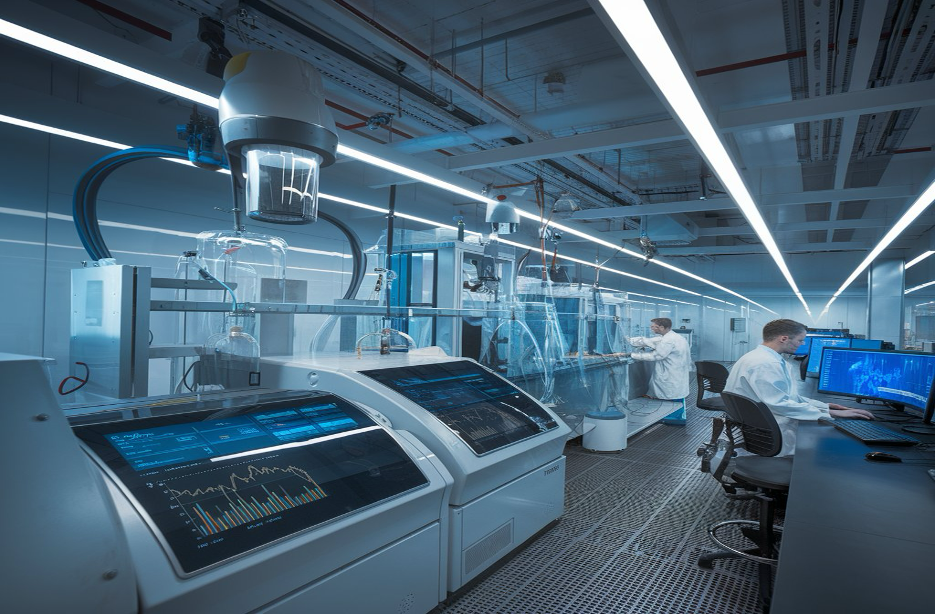Analytical Equipment: The Role of GC and HPLC
25th Feb 2025
The Role of GC and HPLC
Laboratories rely on advanced analytical equipment for research, quality control, and industrial applications. Among the most widely used techniques are Gas Chromatography (GC) and High-Performance Liquid Chromatography (HPLC), essential for separating, identifying, and quantifying components in complex mixtures. These methods play a crucial role in industries such as biotechnology, pharmaceuticals, chemistry, environmental science, and forensic science, where precision and accuracy are paramount.

With the increasing demand for high-quality data, GC and HPLC remain indispensable tools in scientific research. While both techniques share similar functions, they differ in their application depending on the physical and chemical properties of the compounds being analyzed. Understanding their mechanisms and advantages is crucial for scientists, researchers, and engineers making informed analytical decisions.
Gas Chromatography (GC): Methods, Applications, and Advantages
Gas Chromatography (GC) is a powerful analytical technique used to separate and analyze compounds that can be vaporized without decomposition. The process involves injecting a vaporized sample into a gas chromatography column inside a temperature-controlled oven. As the sample moves through the column, its components interact with the stationary phase, leading to their separation based on volatility. This detailed breakdown provides valuable insights into the structure, concentration, and purity of the sample.
Applications of GC:
GC is widely used across industries where volatile compounds require analysis, including:
- Pharmaceutical Industry – Drug formulation, quality assurance, and impurity profiling.
- Forensic Science – Detection of drugs, toxins, explosives, and contaminants.
- Food Safety & Quality – Analysis of pesticides, flavors, and food additives.
- Environmental Monitoring – Detection of air and water pollutants.
Key Advantages of GC:
✔ High Sensitivity & Accuracy – Ideal for detecting trace-level compounds in complex samples.
✔ Fast Analysis – Provides rapid results, making it efficient for high-throughput testing.
✔ Wide Industrial Application – Used in pharmaceuticals, food safety, forensic science, and environmental studies.
High-Performance Liquid Chromatography (HPLC): Functionality and Industry Applications
High-Performance Liquid Chromatography (HPLC) is a versatile analytical technique designed to separate, detect, and quantify components in liquid samples. Unlike GC, which requires compounds to be volatile, HPLC is ideal for analyzing non-volatile, thermally unstable, and large molecular-weight compounds. This makes it an essential tool in pharmaceutical research, clinical diagnostics, and biochemical investigations.
An HPLC system comprises two primary components:
- A high-pressure pump that forces the solvent through the system.
- A chromatography column where the sample is injected and separated based on its interaction with the stationary phase.
As the sample moves through the column, different compounds separate at different rates, making HPLC crucial for quality control, drug development, and environmental testing.
Applications of HPLC:
- Pharmaceutical Industry – Drug development, stability testing, and regulatory compliance.
- Clinical & Biochemical Research – Analysis of hormones, proteins, and metabolites for disease diagnosis.
- Food & Water Safety – Detection of contaminants in food, beverages, and water supplies.
- Environmental Science – Monitoring pollutants and chemical residues.
Key Advantages of HPLC:
✔ Versatile – Suitable for a wide range of compounds, including proteins and pharmaceuticals.
✔ High Resolution – Effectively separates complex mixtures for precise analysis.
✔ Quantitative & Qualitative – Provides detailed compound identification and concentration measurements.
✔ Broad Industry Application – Used in pharmaceuticals, food safety, forensic science, and pollution control.
Choosing the Right Analytical Equipment: Key Considerations
The choice between GC and HPLC depends on various factors, including:
- Sample Type – GC is ideal for volatile, thermally stable compounds, while HPLC is suited for non-volatile and larger molecules.
- Sensitivity Requirements – Both techniques offer high accuracy, but selection depends on the desired level of detection.
- Speed & Efficiency – GC provides faster results, whereas HPLC is more flexible for different sample types.
- Cost & Maintenance – GC requires gas supplies and temperature control, while HPLC demands solvent handling and standardization.
Laboratories must consider these aspects to ensure optimal performance, accuracy, and productivity when selecting analytical instruments. The more efficient the chromatography system, the greater the reliability of scientific advancements and industrial applications.
Conclusion
The development of Gas Chromatography (GC) and High-Performance Liquid Chromatography (HPLC) has been one of the most significant achievements in modern analytical science. While GC excels in analyzing volatile compounds, HPLC is better suited for complex liquid samples. Both techniques are invaluable across various industries, including biotechnology, pharmaceuticals, environmental science, and quality control.
Understanding the capabilities and limitations of GC and HPLC allows scientists and industries to leverage these technologies effectively, ensuring precision, efficiency, and innovation in analytical research and development.
